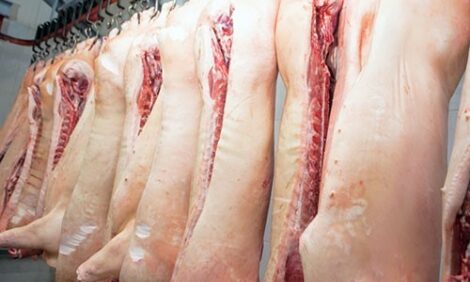



Co-op Price Cuts Emphasise Difficulties in Red Meat Sector
UK - The challenges facing the UK food retail sector are illustrated by the announcement that the Co-operative’s food division is to cut the cost of over 200 of its own-brand, British-sourced meat and poultry products, by an average of 10 per cent but up to 50 per cent in some cases.According to Stuart Ashworth, Head of Economics Services with Quality Meat Scotland (QMS), this also highlights the challenges faced by the processors who are working with multiple retailers, in terms of their ability to pass on the cost of raw meat or, conversely, their ability to pay more at the farm gate.
“The good news in the Co-op’s announcement was a commitment to make greater use of British lamb in its retail offer and a declaration of growing grocery sales.
"Some of this growth is based on the growing trend for ‘little and often’ shopping that the smaller convenience supermarkets benefit from but who in turn tend to have a smaller range of meat and meat products available,” said Mr Ashworth.
The reality, which producers would be quick to assert observed Mr Ashworth, is that during 2015 the average farmgate price for beef cattle was six per cent lower than in 2014. In contrast, the average retail price for beef was unchanged, although mince price did fall by 2 per cent.
The challenge to the retailers from those further up the chain is that they could drop prices without jeopardising farm gate price by taking a smaller margin on the meat they sell.
“A similar scenario is revealed for lamb where the farmgate price has fallen 10 per cent between 2014 and 2015, while the retail price has increased by 2 per cent,” said Mr Ashworth.
“This however hides the fact that the lamb retail price movement since 2013 has not matched the overall increase in farmgate price for lamb in that period. In other words, lamb retail prices remain great value for money when considered alongside the movement in farmgate prices since 2013.”
The change in movement between farmgate and retail price is even more pronounced in the pig sector where farmgate prices fell, on average, 18 per cent between 2014 and 2015 while retail pork prices only fell 3 per cent and bacon prices 4 per cent.
Basic comparison between retail price and farmgate price then suggests, said Mr Ashworth, that scope exists for retail prices of beef and pigmeat to fall without impacting on farmgate prices.
“However, this oversimplifies the market place in which processors operate. They work hard to find customers both retail, foodservice and food manufacturing at home and abroad for the different parts of the carcase that they sell and strive to maximise the value, or reduce the cost, of trading the non-meat offals, skins and hides that are the by-product of meat production.”
According to Mr Ashworth, the prevailing intense price competition in the multiple retail sector suggests there is unlikely to be much strengthening of livestock farmgate prices in the short to medium term.
“The current market situation does, however, highlight the continued importance of working hard to differentiate the Scotch brands in the marketplace and promoting their quality message and what sets them apart, to UK and global consumers. By doing so our industry will continue to benefit from the opportunity to achieve a premium price,” said Mr Ashworth.








